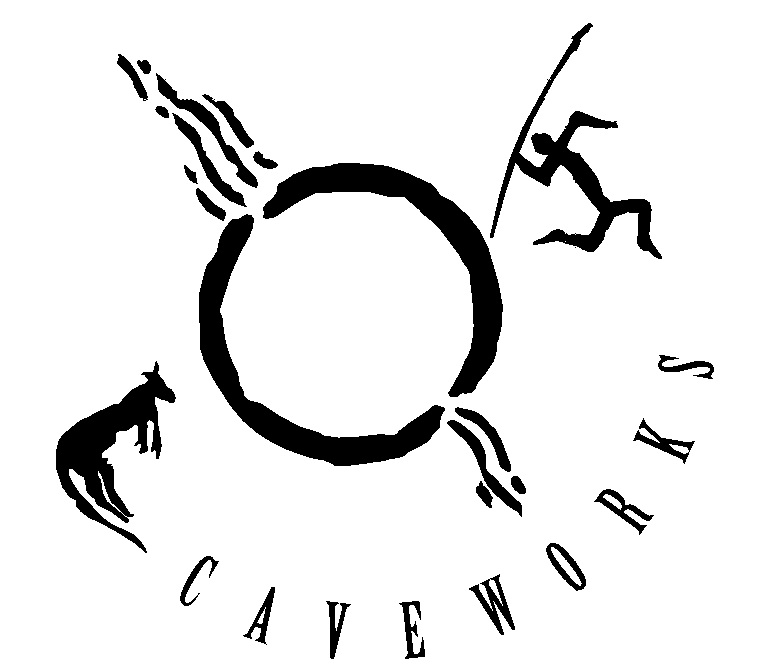
For many years it was believed that the long straw (5.43 metres) in Jewel Cave, Western Australia, was the longest tubular stalactite that can be viewed in a guided tourist cave anywhere in the world. For many years also it has been believed that an even longer straw (6.24 to 6.36 metres) in Strong's Cave Western Australia was the world's longest such speleothem of this type. Now it seems that both these records have been toppled.
The longest tubular stalactite on record in a recently (1999) developed tourist cave is 21.16 feet (6.45m) long and resides in Kartchner Caverns, Arizona. When CaveWorks Resource Officer Peter Bell visited this site last year he reported that a replica of the long straw was then on display however future plans were to open the section of cave containing the straw itself.
Other very long straw stalactites occur in Amelineau Cave, France, where a large number of them, each 3 to 6m long, exist close together in a single room. Recent exploration in Mexico has discovered a soda straw reported to be 6.63 metres long.
The long straw in Jewel Cave was re-measured in August 2000 by Greg West of Cape Surveys. The instrument used was a Nikon DTM 720 Total Station capable of reading horizontal distances to +/- 0.005 metre and horizontal and vertical angles to 5 seconds of arc.
To determine the length of the straw a baseline was established on the wooden pathway adjacent to the straw. The horizontal length of the baseline was measured with the Nikon Total Station. Horizontal angles were observed at both ends of the baseline between the baseline and the bottom of the straw. This allowed for the solving of the horizontal triangle formed between the baseline and the straw. Vertical angles were then observed from each end of the baseline to the top and bottom of the straw. This then allowed for the solving of the triangle formed between the baseline point, top of the straw and the bottom of the straw. From one end a value of 5.430 metres was determined and from the other a value of 5.438m. The discrepancy between the two measurements was therefore 8 millimetres.
Time constraints precluded taking an increased amount of redundant observations that would provide more confidence in the results. The major obstacle to the accurate determination of the length is in the identification of the start of the straw at the roof of the cavern.
The Jewel Cave straw was previously measured in 1990 by Norm Poulter from the Speleological Research Group of Western Australia (SRGWA). This measurement used a theodolite and a tripod mounted adjustable mirror used to bounce a high intensity narrow angle light beam directly up the length of the straw. The calculated length was 5.457 +/- 0.012 metres.
The average difference between the 1990 and 2000 measurements is therefore 23mm. These two measurements agree more closely with each other than the length of 5.9 metres quoted in Cave Wonderlands, which must be considered unreliable.
The long "straw" in Strong's Cave was measured by Lloyd Robinson and Lex Bastian in 1960 using photographic methods which gave a length of 6.248 +/- 0.04%. A theodolite measurement by SRGWA in 1990 gave a length of 6.367 +/- 0.012mm. It has been speculated that a tree root might be involved in the development of this feature.
Sources
Hill, C. & Forti, P. (1997) Cave minerals of the world. Second Edition. National Speleological Society, Alabama, USA.
Ivy, J. & Jones, R. (2000) Recent explorations and discoveries in Cueva de la Puente, San Luis Potosi, Mexico. Abstract from the 2000 National Speleological Society Convention in Elkins, West Virginia published in the Journal of Cave & Karst Studies, December 2000.
Poulter, N. (1991) Trip reports: Strongs Cave and Jewel Cave. Cavers Chronicle Vol. 18(1): 8-9.
Rolsh, G. (1995) Cave Wonderlands of Western Australia. Rolsh Productions, Albany.
West, G. (2000) Unpublished letter from Cape Surveys to CaveWorks, 28th August 2000.